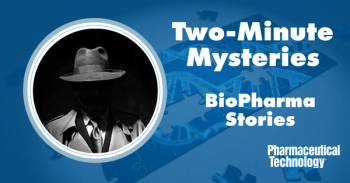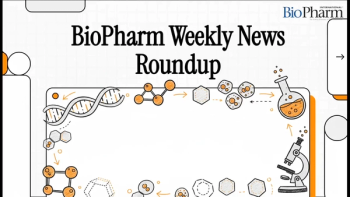Gene therapy developer ViGeneron has rebranded as VeonGen Therapeutics, marking its evolution into a clinical-stage company with two gene therapies now in human trials, according to a news release from the company on June 5, 2025 (1). The rebranding reflects a strategic pivot from platform innovation and development to therapeutic translation and clinical-stage development, particularly in the area of inherited retinal disorder.
Leading the company’s pipeline is VG801, a dual adeno-associated virus (AAV)-based gene therapy targeting Stargardt disease and related ABCA4-associated retinal dystrophies (2). The agent received FDA Investigational New Drug clearance in December 2024, making it the first novel messenger RNA (mRNA) trans-splicing gene therapy to receive this status (2). VeonGen also continues clinical development of VG901, an investigational gene therapy designed for patients with retinitis pigmentosa caused by CNGA1 mutations. The FDA granted Rare Pediatric Disease Designation (RPDD) to VG901 in January 2025 (3).
Key Takeaways
- ViGeneron rebrands as VeonGen Therapeutics, signaling its evolution into a clinical-stage gene therapy company with two programs in human trials.
- VeonGen’s lead gene therapy VG801, for Stargardt disease, gains FDA Rare Pediatric Disease Designation and advances in first-in-human trials.
- Proprietary vgRNA REVeRT and vgAAV platforms overcome AAV delivery limits, enabling scalable gene therapies for eye, CNS, and cardiovascular diseases.
Both programs leverage the company’s proprietary platforms—vgRNA REVeRT and vgAAV—engineered to address persistent delivery and payload limitations in AAV gene therapy. The vgRNA REVeRT system uses mRNA trans-splicing to deliver large genes exceeding the ~4.7 kilobase limit typical of AAV vectors, while the vgAAV platform comprises engineered capsids optimized for either intravitreal or subretinal administration.
FDA designation and trial progress signal regulatory and clinical momentum
VeonGen’s lead program VG801 recently received an RPDD from FDA, which covers investigational therapies intended to treat serious, life-threatening diseases affecting fewer than 200,000 children in the United States, and it qualifies the sponsor for a potential Priority Review Voucher upon approval.
VG801 is currently being evaluated in a first-in-human Phase I/II clinical trial. Patient dosing is underway, and VeonGen is actively collaborating with FDA through the Rare Disease Endpoint Advancement pilot program to develop a functional endpoint for the study.
“This rebranding reflects our journey—from a platform innovator to a clinical-stage company with two gene therapies in the clinic,” said Caroline Man Xu, PhD, co-founder and chief executive officer of VeonGen (1). “With VG801 and VG901 progressing in clinical trials and our platforms demonstrating robust translational potential, we are well positioned to expand the frontier of genetic medicine in ophthalmology and beyond. The FDA Rare Pediatric Disease Designation for VG801 not only highlights the strength of our scientific approach but also reinforces our focus on accelerating the development and delivery of transformative therapies for patients in urgent need.”
Stargardt disease, which VG801 targets, is the most common inherited retinal disease worldwide, affecting roughly 1 in 8,000 to 10,000 individuals. It is a leading genetic cause of macular degeneration in children and young adults, with no approved therapies currently available.
Expanding gene therapy applicability beyond ophthalmology
While VeonGen’s initial therapeutic focus is in ophthalmology, its modular gene therapy platforms are designed for broader application (1). In addition to treating retinal diseases, the company is exploring use of its AAV-based systems in cardiovascular, central nervous system, and other complex genetic conditions.
The vgAAV platform enables less invasive routes of administration, such as systemic and intravitreal injection, by overcoming biological barriers to delivery. Meanwhile, the vgRNA REVeRT platform allows for the reconstitution of large genes at the mRNA level in targeted tissues. A third platform under development, known as AAV Transactivation, uses CRISPR/Cas-mediated transcriptional regulation to activate or suppress gene expression in vivo, offering potential applications in both therapeutic and diagnostic settings.
References
- VeonGen Therapeutics. ViGeneron Rebrands as VeonGen Therapeutics and Announces FDA Rare Pediatric Disease Designation and Clinical Progress for Lead Gene Therapy VG801 in Stargardt Disease. Press Release. June 5, 2025.
- VeonGen Therapeutics. ViGeneron Rebrands as VeonGen Therapeutics and Announces FDA Rare Pediatric Disease Designation and Clinical Progress for Lead Gene Therapy VG801 in Stargardt Disease. Press Release. December 18, 2024.
- VeonGen Therapeutics. ViGeneron Announces FDA Rare Pediatric Disease Designation for VG901 and DSMB Approval to Advance Dose Escalation in Phase 1b Retinitis Pigmentosa Trial. Press Release. January 8, 2025.






